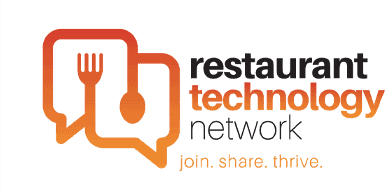A year ago, if you’d said “What does value mean to you?” to a room of restaurant customers they might answer with:
- Getting great food for a low price
- Receiving excellent, personalized service
- Having a unique and memorable dining experience
In COVID-era dining, however, values have changed. What customers want out of a dining experience has shifted from a focus on the cost and taste of the food itself — although that’s still highly valuable — to ease of dining facilitated by smartphones and contactless technology.
Move to Mobile
As Restaurant Business published last September, “the pandemic has been huge for mobile ordering.” At Wendy’s, for example, “digital sales doubled to 5% of sales in the second quarter.”
As diners faced the decision between cooking yet another meal for themselves at home or opting for safe takeout options, restaurants who hopped on the mobile guest-side ordering train early reaped the benefits.
And guests were eager to adopt new mobile dining solutions in order to get their coveted take-out favorites. Clearly, mobile options have become valuable to today’s diners.
Ease of Use
Another big change is customer demand for easy-to-navigate digital restaurant tools. With so many restaurants switching their focus from in-person service to curbside delivery or to-go, being able to easily place an order has become critical. And no one has time for a wonky website.
As dining out has diminished, it’s become all the more important for restaurants to attract as many customers as possible. That means updating websites is crucial. From a restaurant’s hours to a browsable digital menu, everything must be easy to find or a consumer will lose interest and move onto the next restaurant option.
Contactless Solutions
Health and safety concerns aren’t going to go away just because there’s a coronavirus vaccine. And restaurants that are attuned to these customer worries will do better in the long run. Not to mention that customers aren’t going to want to give up the convenience of ordering and paying for their food online. Contactless payment solutions are here to stay.
By reassuring customers of less contact, many restaurants are adding value to their dining experience, especially at the point of sale where plexiglass screens and touchless credit card units are now less a novelty and more of a consumer expectation.
According to Payments Journal, in 2020 the biggest trend in consumer payment was mobile payments. And, as of October 2020, an additional 110 million contactless payment cards were expected to be issued by the end of the year.
Deals Are a Bigger Deal
The pandemic has put a pinch on many American’s pockets, which is to say that the desire to find a deal has only increased.
Whereas before it might have been easy for a consumer to rationalize a restaurant splurge, today most people are looking to spend less and save more money, McKinsey reports.
Rather than being a problem, however, this presents an opportunity for restaurants to get creative with their deals and promotions, especially with digital deals and promo codes they can offer through mobile ordering apps.
Meeting customers where they are—at home and online—will continue to be a way to provide guest value in 2021.
Digital Customer Engagement
With huge segments of the population still working from home, gone are the days of bumping into a favorite cashier at the grocery store or popping in for a coffee at a beloved cafe. To engage with loyal customers now, you have to meet them where they are—again, online.
This will look different for every restaurant, but it likely involves some element of social media. Letting your customers know about menu changes and price adjustments online is a way to encourage interaction and keep them interested in your product.
It’s also important to keep customers in the know about the options you’re providing, the health and safety precautions you’re taking, and other information about your restaurant’s status. Regular updates will keep your community engaged and more willing to make the effort to support your business—both now and after the pandemic is over.





